Recent Engagement Trends
September 2022
This research is from The Audience Agency's nationwide longitudinal (ongoing) panel survey of changing views about participating in creative and cultural activities through the recent and ongoing crises, and beyond, the Cultural Participation Monitor.
Contents
Themes
Recent arts, culture and heritage attendance has risen to an impressive 90% among respondents, with film and museums/heritage proving especially popular, particularly with families, while online arts activities continue to attract a younger and more ethnically diverse audience.
In Person Attendance
Attendance for in-person arts and heritage has risen since Spring 2022, from 70% to 90%.
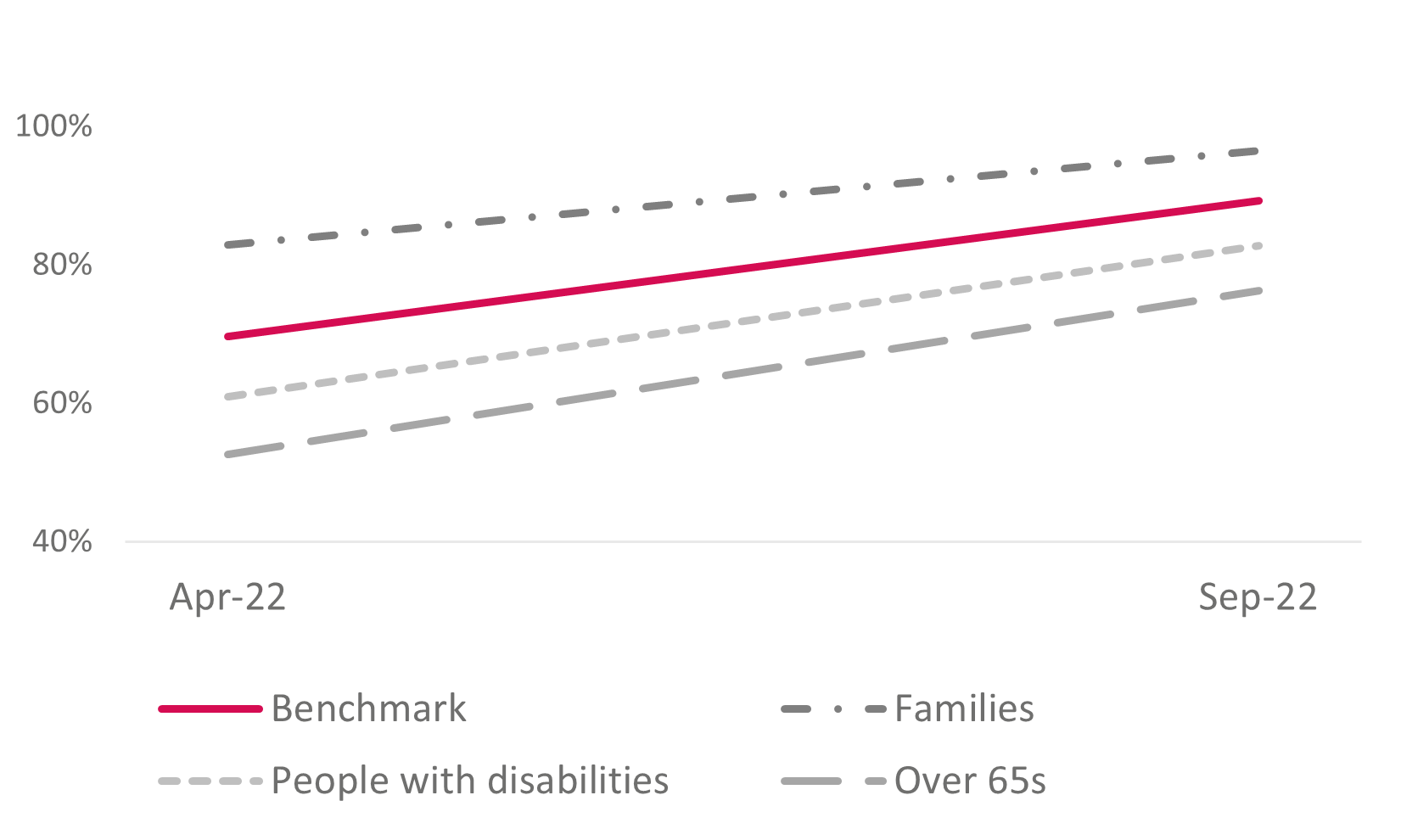
- Though older age groups are still engaging less than the younger age groups (76% of those aged 65 and over have done anything in-person), their attendance is still up from the spring (where only 53% had done anything in-person).
- Similarly, people with disabilities have lower in-person engagement (83%) but higher than in the previous wave (61%).
- Conversely, attendance among families is particularly high (97%), especially for families with children up to 10 years old.
The most popular activities were film and museum/heritage activities:
- 65% went to see a film in the last year, including 31% going more than once.
- And 61% went to a historic park or garden, including 21% going several times.
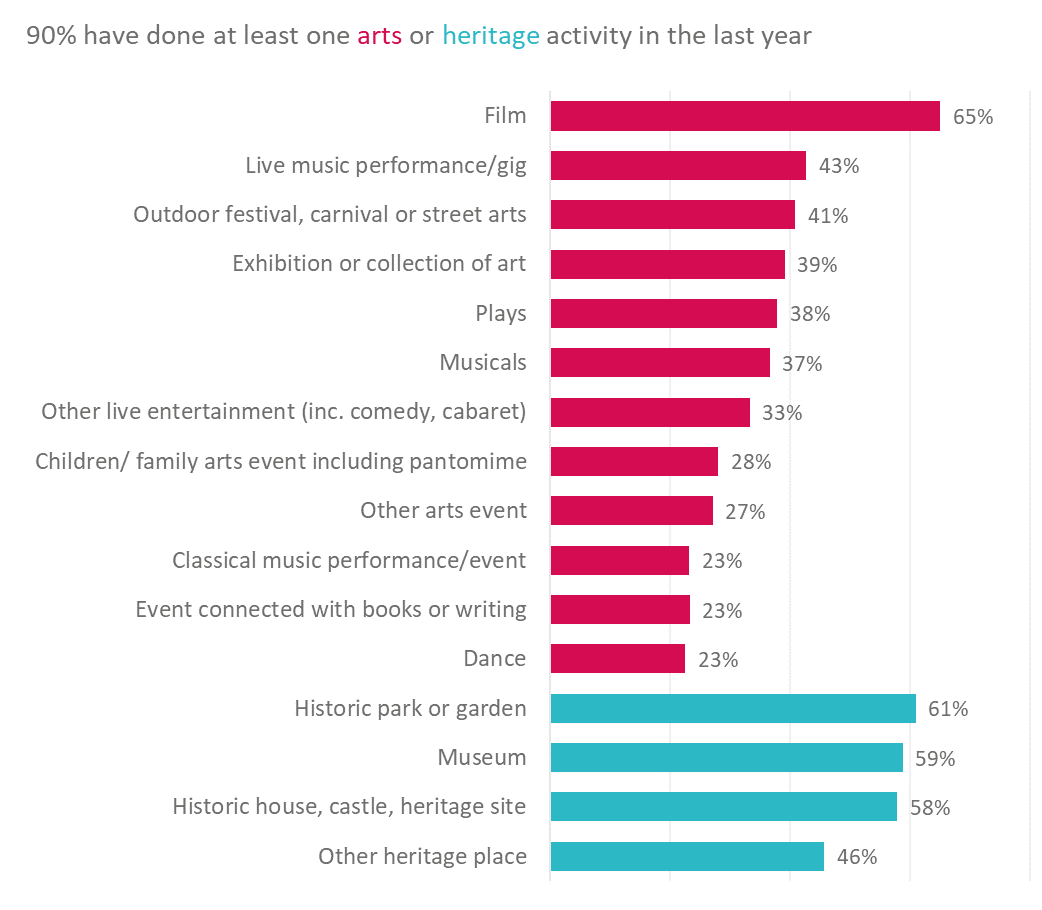
Online Attendance
Younger people were still the most likely to engage with art/heritage activities online, with 81% of 16-24 year olds doing any activity in the last year, compared to 36% for those 65 and older (cf. 57% overall).
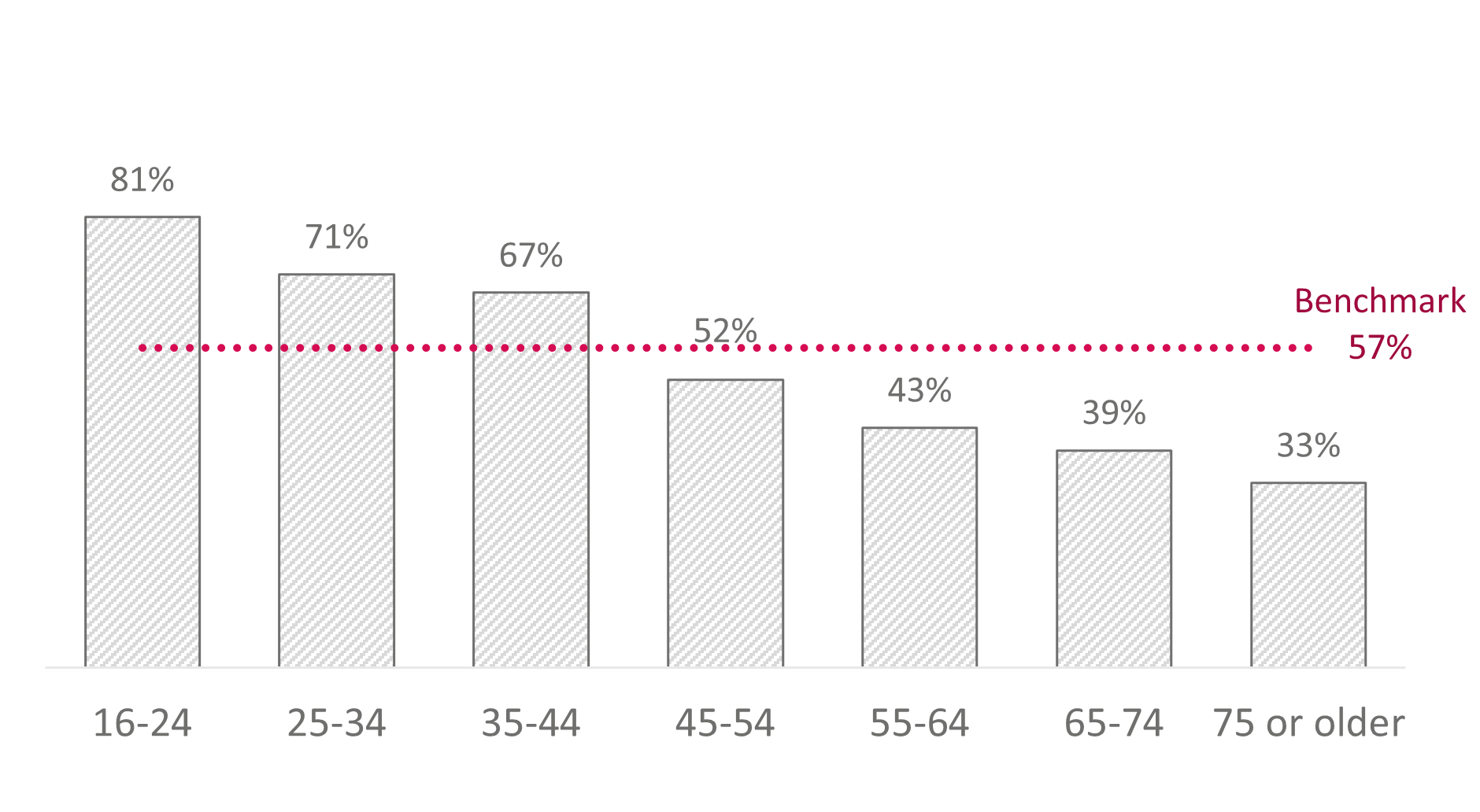
- The activity that older people were most likely to have done was watching a live/recorded event (30%).
- Younger people were particularly more likely to take part in a workshop/discussion/ art project (55% did any of these, cf. 28% overall) and 37% had taken part in an immersive online experience.
- Black, Asian and Mixed ethnicity groups were also much more likely to have done online activities (78%, 70%, 80% respectively),
- Families were also more likely to have engaged online (71%).
- People with disabilities were not noticeably more likely to have done online activities than those not identifying as disabled.
- Nor were people living in rural areas, compared to urban.
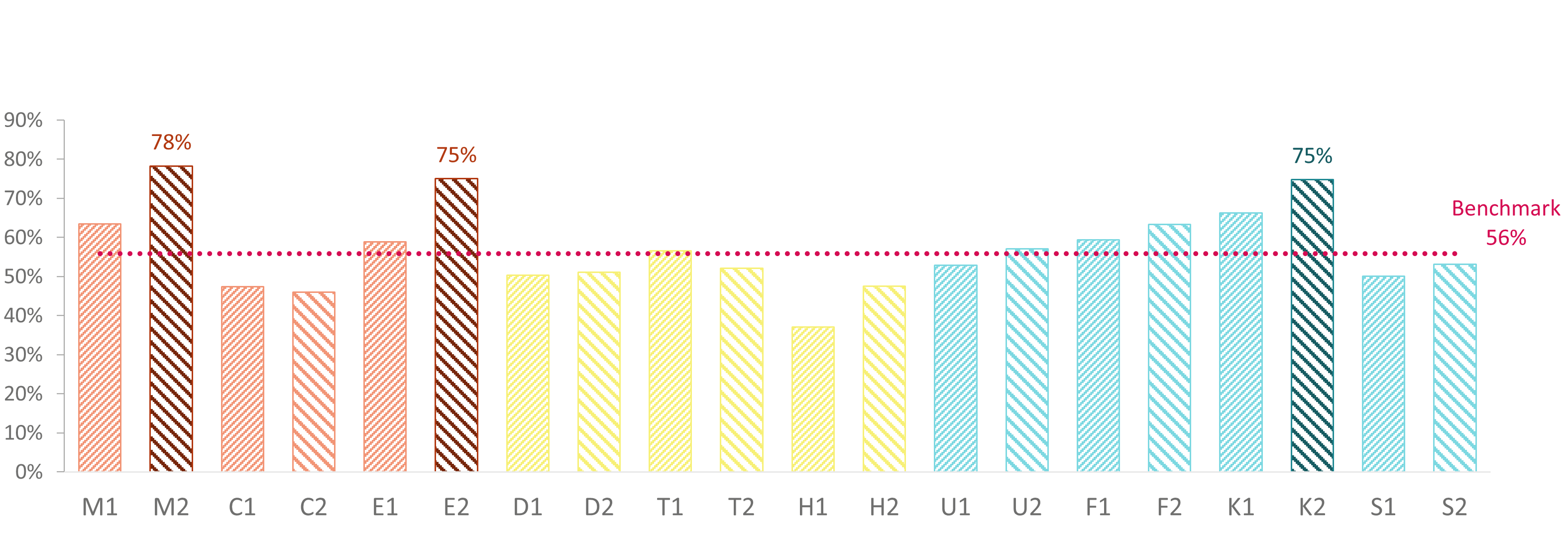
- Metroculturals, Experience Seekers and Kaleidoscope Creativity were the most likely Audience Spectrum segments to have taken part in any online arts/heritage activities (72% and 70% respectively).
- This was especially true for M2, E2, K2 - the younger subsegment in each case.
- Metroculturals were particularly more likely to have watched an event recording or stream (63% vf. 48% overall).
- Kaleidoscope Creativity were especially likely to visit an online exhibition (32% vf. 17% overall).
- Experience Seekers were more likely to take part in an art project through social media (27% cf. 16% overall).
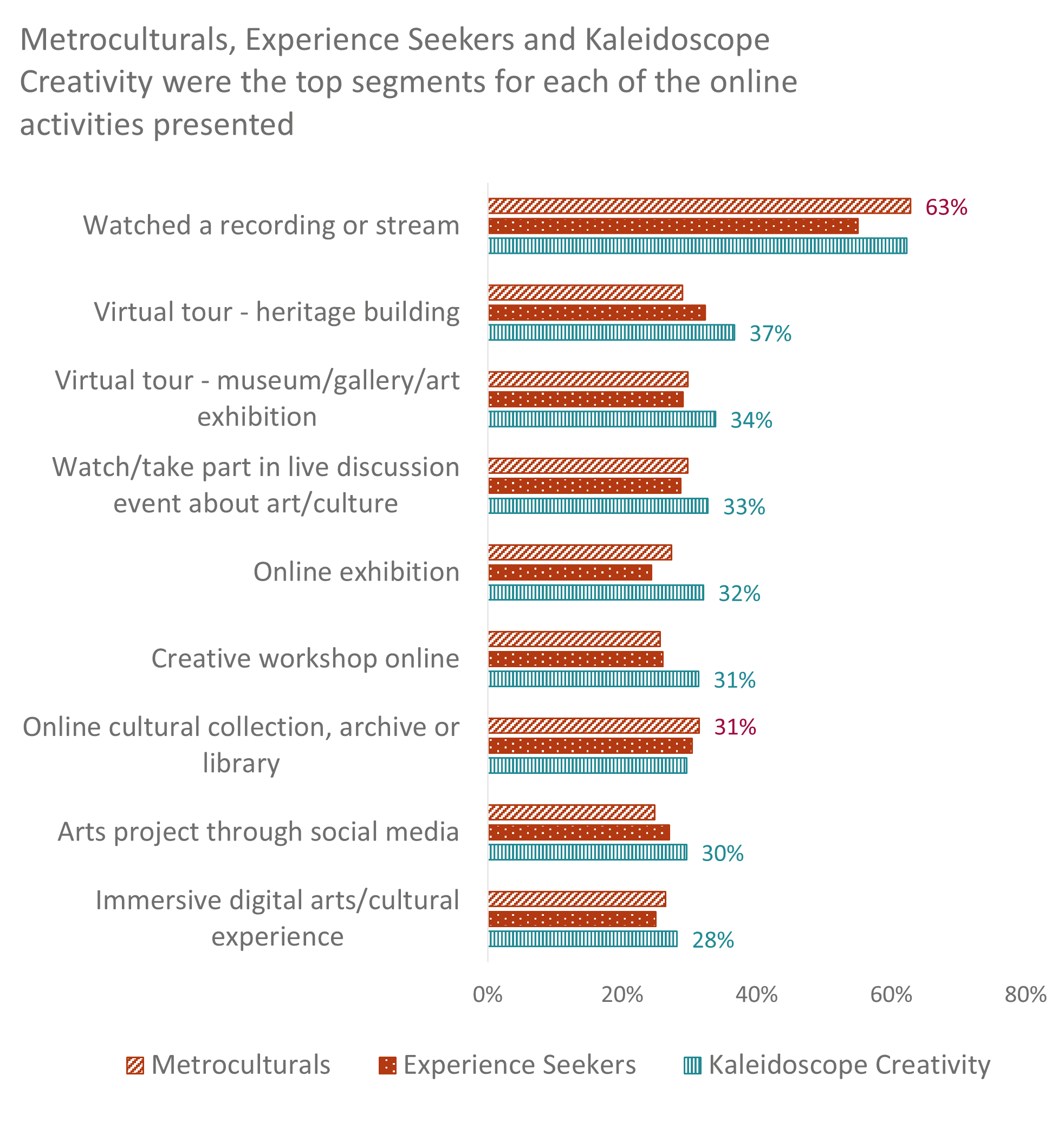
Related videos
Cultural Participation Monitor | Latest Findings on Audience Attitude and Behaviours
Watch nowTEA Break: Bad behaviour? - What types of behaviour people prefer when attending culture
Watch nowTEA Break | From Interest into Action
Watch nowTEA Break | More Insights on Changing Audiences
Watch nowTEA Break | Key Changing Audiences for Art Forms
Watch nowOther findings from Wave 7 | Sep 2022 | Cost of Living, everyday participation, shops/cafés
-
Cost of living crisis
The vast majority of respondents say that they are worried about the effects of the cost-of-living crisis on them and their household, with a whopping 92% intending to scale back on entertainment spend outside of the home as a result, especially among mid-engaged, middle-aged and less urban groups.
-
Everyday creative participation
While financial uncertainty might make people nervous about splashing out on more expensive arts and culture activities, over 40% of people say that pursuing creative hobbies in their own time is a key interest, a trend that skews towards younger participants and has increased through the pandemic.
-
Ongoing Attitudes to Covid
Fears surrounding Covid-19 are softening, with half feeling 'back to normal' and fewer than 1 in 10 people expressing strong concern about catching the virus themselves, although over half still worry about vulnerable friends and family, while support for certain safety precautions remains high.
